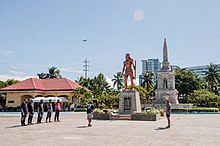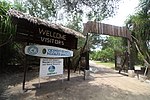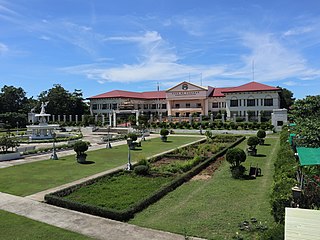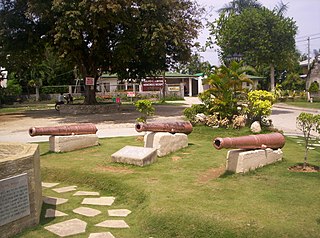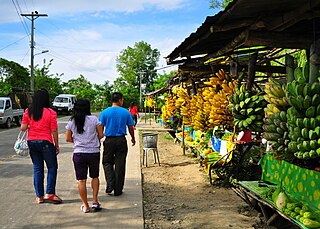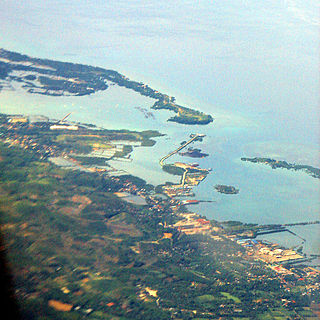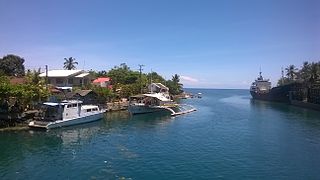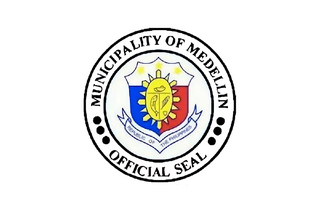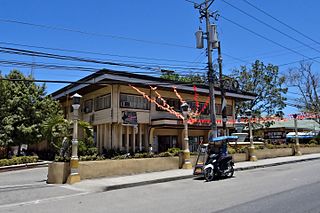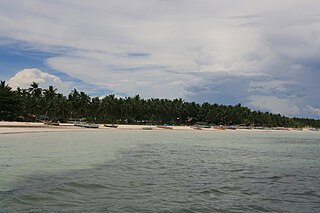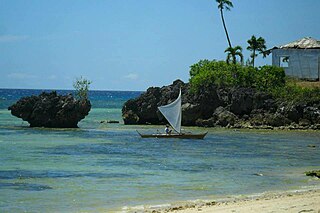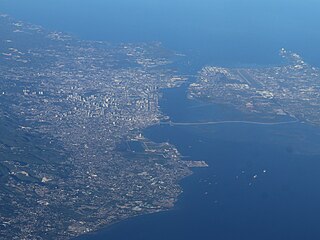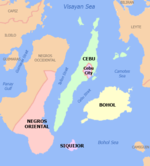Lapu-Lapu City | |
|---|---|
| City of Lapu-Lapu | |
 Lapu-Lapu City Hall of Justice | |
| Nickname: Historic Resort City | |
| Anthem: Dakbayan sa Sidlakan (English: City of the East) | |
 Map of Central Visayas with Lapu-Lapu City highlighted | |
Location within the Philippines | |
| Coordinates: 10°18′46″N123°56′56″E / 10.3127°N 123.9488°E | |
| Country | |
| Region | Central Visayas |
| Province | Cebu (geographically only) |
| District | Lone district |
| 1730 |
| Named for | Lapulapu |
| Barangays | 30 (see Barangays) |
| Government | |
| • Type | Sangguniang Panlungsod |
| • Mayor | Junard "Ahong" Q. Chan (PDPLBN) |
| • Vice Mayor | Celedonio B. Sitoy (PDPLBN) |
| • Representative | Ma. Cynthia K. Chan (PDPLBN) |
| • City Council | Members |
| • Electorate | 245,395 voters (2022) |
| Area | |
| • Total | 58.10 km2 (22.43 sq mi) |
| Elevation | 70 m (230 ft) |
| Population (2020 census) [2] | |
| • Total | 497,604 |
| • Density | 8,600/km2 (22,000/sq mi) |
| • Households | 129,652 |
| Demonym | Oponganon [3] |
| Economy | |
| • Gross domestic product | ₱151.4 billion (2022) [4] $2.675 billion (2022) [5] |
| • Income class | 1st city income class |
| • Poverty incidence | 10.80 |
| • Revenue | ₱ 2,687 million (2020) |
| • Assets | ₱ 9,541 million (2020) |
| • Expenditure | ₱ 3,171 million (2020) |
| Service provider | |
| • Electricity | Mactan Electric Company (MECO) |
| Time zone | UTC+8 (Philippine Standard Time (PST)) |
| ZIP code | 6015, 6016 (Mactan-Cebu International Airport) |
| PSGC | |
| IDD : area code | +63 (0)32 |
| Native languages | Cebuano, and Hiligaynon |
Lapu-Lapu City, officially the City of Lapu-Lapu (Cebuano : Dakbayan sa Lapu-Lapu; Hiligaynon : Dakbanwa sang Lapu-Lapu; Filipino : Lungsod ng Lapu-Lapu), is a 1st class highly urbanized city in the Central Visayas region of the Philippines. According to the 2020 census, it has a population of 497,604. [2]
Contents
- History
- Cityhood
- Geography
- Barangays
- Climate
- Demographics
- Economy
- Government
- Transportation
- Gallery
- Military bases
- Notable people
- See also
- Notes
- References
- Sources
- External links
It was formerly known as Opon, the city being renamed to its present name in 1961. It is one of the cities that make up Metro Cebu in the Philippines. It is located in the province of Cebu, administratively independent from the province, but grouped under Cebu by the Philippine Statistics Authority (PSA).
The second busiest airport in the Philippines, Mactan–Cebu International Airport, is located in Lapu-Lapu City. It opened in 1966 and serves as a hub for Philippine Airlines, and as an operating base for Cebu Pacific and Philippines AirAsia.




